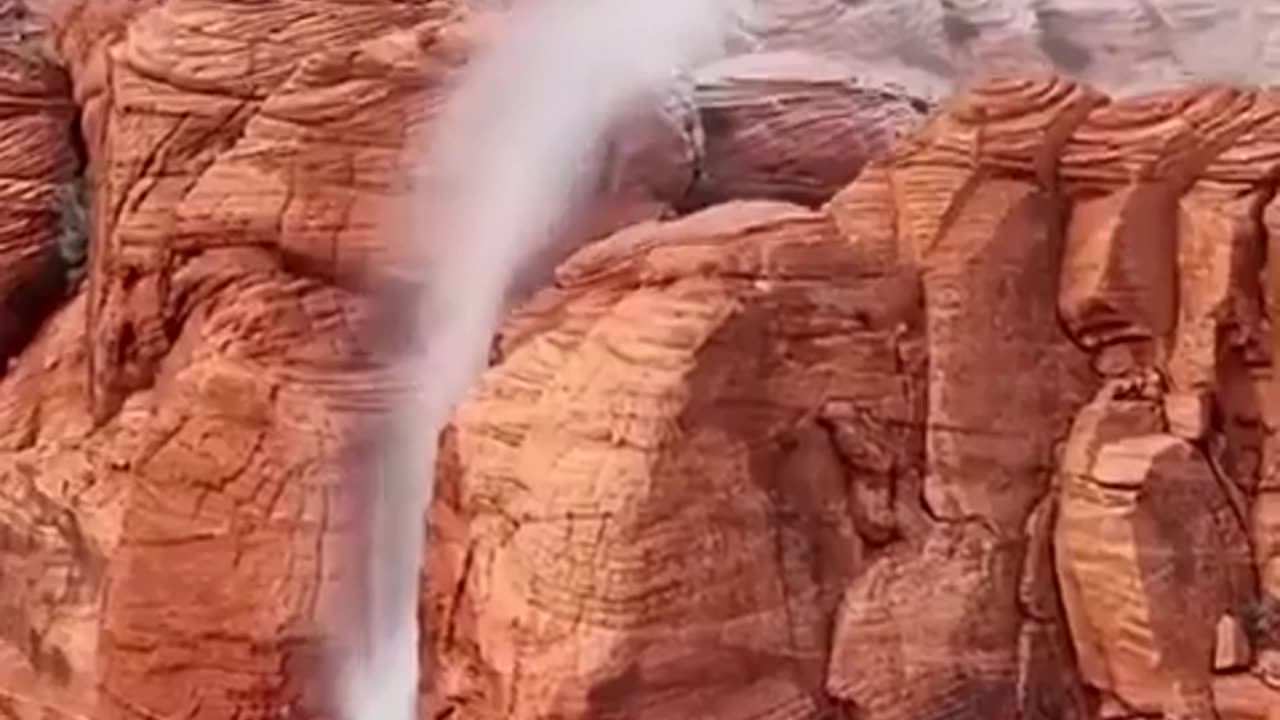Premium Only Content

Waterfall flows backwards, due to high winds in Utah
Waterfall flows backwards, due to high winds in Utah
A waterfall is any point in a river or stream where water flows over a vertical drop or a series of steep drops. Waterfalls also occur where meltwater drops over the edge of a tabular iceberg or ice shelf.
Waterfalls can be formed in several ways, but the most common method of formation is that a river courses over a top layer of resistant bedrock before falling onto softer rock, which erodes faster, leading to an increasingly high fall. Waterfalls have been studied for their impact on species living in and around them.
Humans have had a distinct relationship with waterfalls since prehistory, travelling to see them, exploring and naming them. They can present formidable barriers to navigation along rivers. Waterfalls are religious sites in many cultures. Since the 18th century, they have received increased attention as tourist destinations, sources of hydropower, and—particularly since the mid-20th century—as subjects of research.
What are the 4 types of waterfalls?
Plunge: Water descends vertically, losing contact with the bedrock surface. Horsetail: Descending water maintains some contact with bedrock. Cataract: A large, powerful waterfall. Multi-step: A series of waterfalls one after another of roughly the same size each with its own sunken plunge pool.
-
 UPCOMING
UPCOMING
FreshandFit
5 hours agoOld World Order Dying
3.73K1 -
 LIVE
LIVE
Inverted World Live
3 hours agoThe Titanic, The Gold Standard, and Jekyll Island | Ep. 129
5,405 watching -
 2:56:44
2:56:44
TimcastIRL
3 hours agoNBA Games RIGGED, 34 Indictments, Democrat Calls It TRUMP'S REVENGE | Timcast IRL
187K81 -
 LIVE
LIVE
Laura Loomer
2 hours agoEP152: Texas Man Arrested For Threatening To Kill Laura Loomer
857 watching -
 LIVE
LIVE
Man in America
6 hours agoEXPOSED: What the Vatican, CIA, & Elites Are HIDING About True Human Potential
1,055 watching -
 LIVE
LIVE
Barry Cunningham
3 hours agoJOIN US FOR MOVIE NIGHT! TONIGHT WE FEATURE THE MOVIE RFK LEGACY!
1,625 watching -
 1:13:42
1:13:42
Sarah Westall
4 hours agoHow Bitcoin was Hijacked, Palantir is a Deep State Upgrade & more w/ Aaron Day
11.7K3 -
 15:59
15:59
ArynneWexler
6 hours agoAll The Reasons You're Right to Fear Zohran Mamdani | NN6
2.32K -
 LIVE
LIVE
Side Scrollers Podcast
10 hours ago🔴FIRST EVER RUMBLE SUB-A-THON🔴DAY 4🔴BLABS VS STREET FIGHTER!
913 watching -
 LIVE
LIVE
DLDAfterDark
2 hours agoGlock's Decision - How Could It Impact The Industry?
176 watching